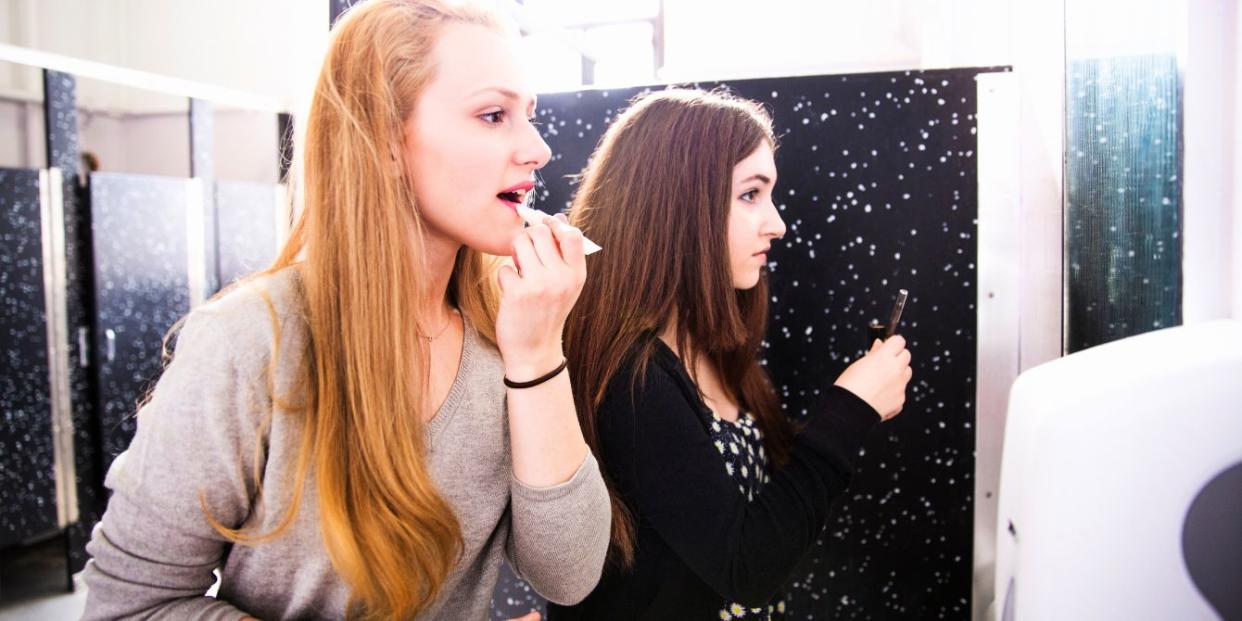School removes mirrors from bathrooms to curb students’ TikTok use

In an effort to cut back TikTok use during school hours, administrators in one North Carolina district have removed mirrors from the bathrooms, noting that students were taking frequent bathroom breaks to create social media content.
Les Atkins, the public relations officer for Southern Alamance Middle School in the Alamance-Burlington School System, told local outlet WFMY why mirrors were recently removed from the building’s bathrooms. “Students were going to the bathroom for long periods of time and making TikTok videos,” he said.
Business Insider cites a district-wide memo sent to parents that said, “On average students visit the restroom 3 to 4 times a day. Some were asking to go out more frequently and staying for upwards of 5 minutes or more.” WFMY reports that some students were visiting the bathroom up to nine times in a day.
Now that the mirrors have been removed, Atkins told WFMY that administrators have seen “not as many visits to the bathroom, not staying as long, and students are held accountable—and then when there’s accountability you see a great difference.”
It seems the move lies in tandem with an overall approach to “digital citizenship,” which Atkins notes is a concerted effort to teach children how to use their devices responsibly in lieu of removing access altogether. The district has also implemented a “digital hall pass” system to keep track of students’ whereabouts throughout the day.
“The pass allows students to check in and out when leaving class, so we know where students are at all times for safety and accountability,” Atkins said.
Of course, aside from the distraction of taking class time to record videos, it’s understandable why some students might feel bathroom anxiety knowing their classmates are filming in what should be a private space. That said, arguments for and against the removal of mirrors are mixed, with some believing that the mirrors are not the problem—the phones are.
As Scott Roth, PsyD, a school psychologist and the founder and clinical director of Applied Psychological Services of New Jersey, told Parents, “There is a slot machine phenomenon that occurs with TikTok, Reels, and YouTube shorts. You hit the dopamine jackpot on an intermittent variable schedule. All of these platforms learn and feed you what it thinks you want to see. This is where the addiction component comes in.”
Roth feels that removing mirrors won’t prevent kids from consuming content, adding that the move “could actually increase a student’s use of their phone. Many teenagers use their phone’s camera to check their appearance.”
Instead, focus should fall on helping “preteens and teens moderate their decision-making when it comes to technology,” he said. “Developmentally, they do not have the ability to tackle this issue alone.”
Some commenters think students’ phones should be taken from them at the start of class, while others cite safety concerns should an emergency occur and kids aren’t able to reach their parents or caregivers quickly.
Only time will tell if the change is successful and if other districts follow suit, but it seems like there’s no clear-cut answer to keeping kids safe in school with the ubiquity of smartphone access.


